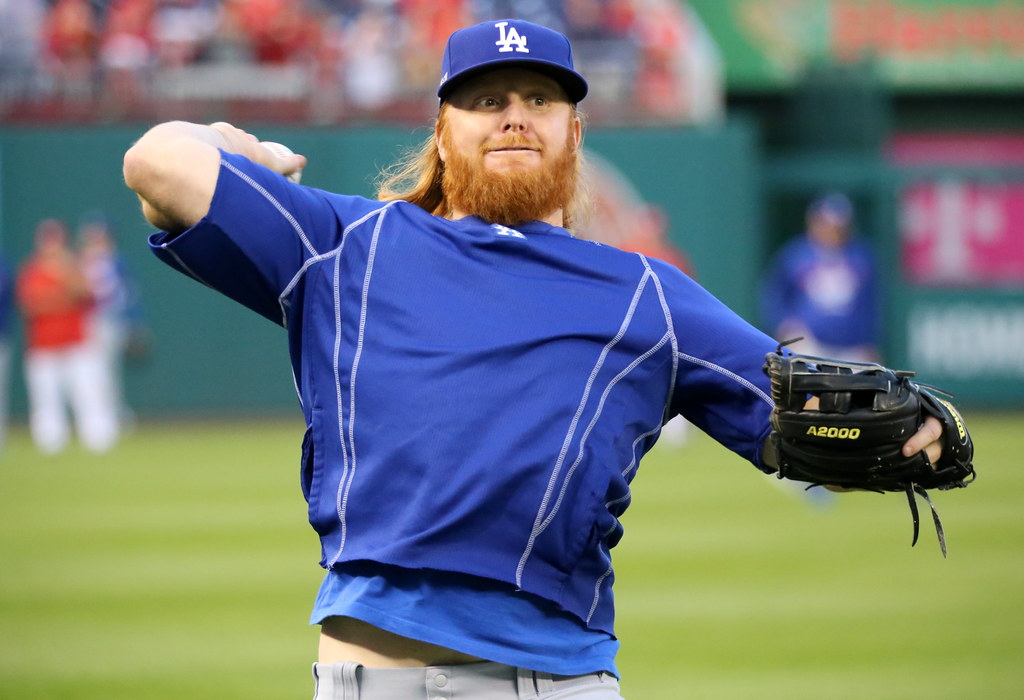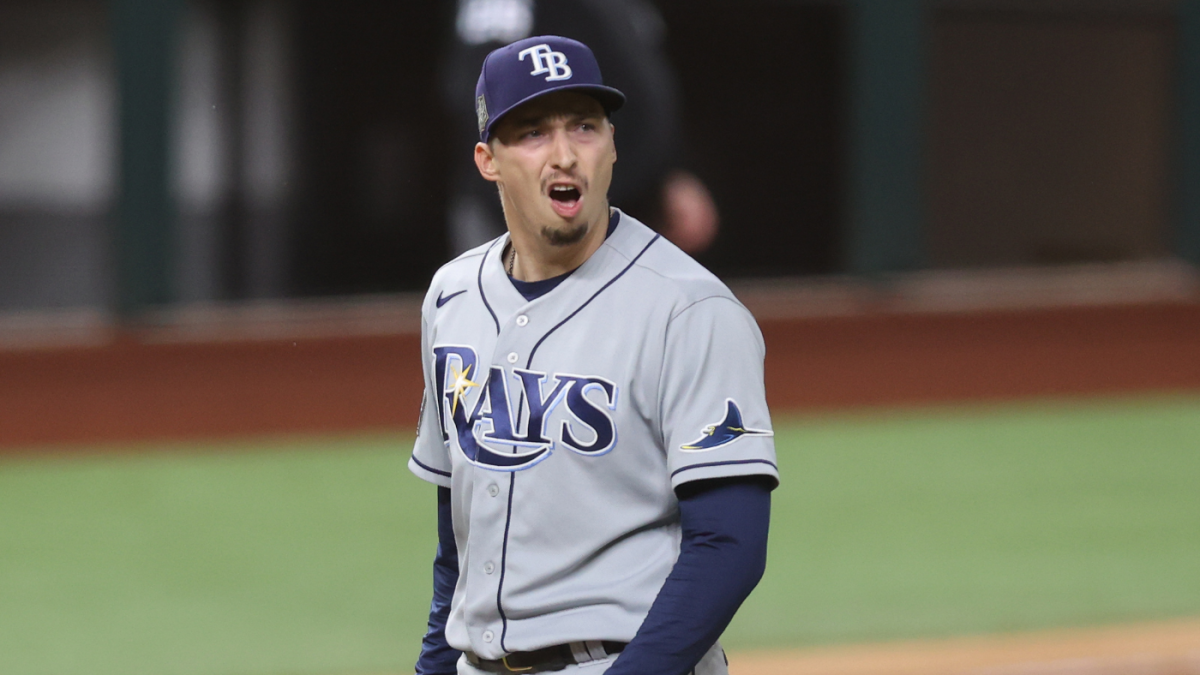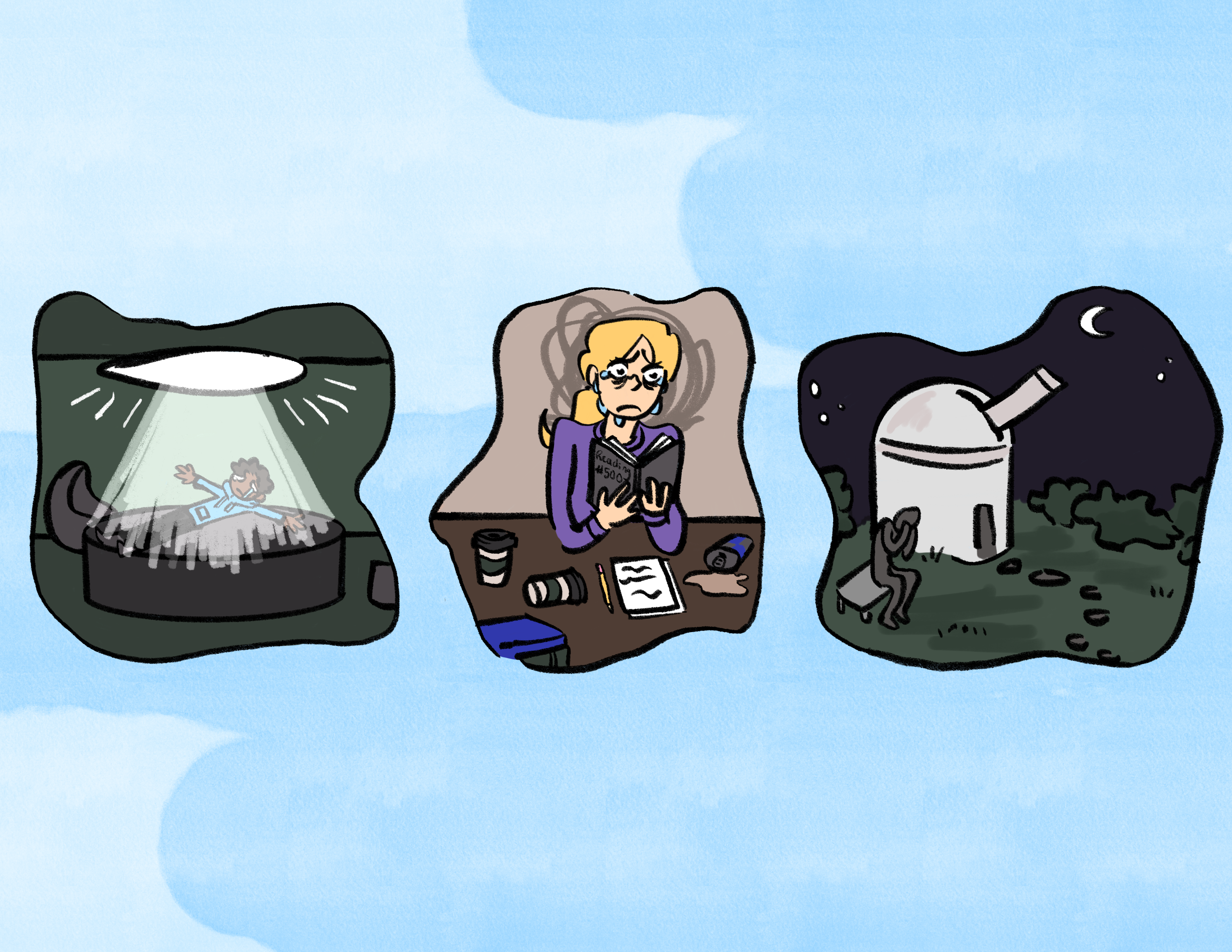If you read Twitter in the aftermath of Tuesday night’s Game 6 between the Tampa Bay Rays and the Los Angeles Dodgers, you would’ve gotten the sense that analytics had finally lost. The perception was that the Rays had relied on a computer to make decisions, which is why starting pitcher Blake Snell was pulled from the game after a dominant 5⅓ innings with only 2 hits, 9 strikeouts, and 73 pitches. The old heads rejoiced that this inexplicable decision had inevitably backfired, “proving” that analytics was overrated and numbers don’t matter.
In reality, the opposite is true: analytics had already won.
Analytics won when the Los Angeles Dodgers hired Andrew Friedman as President of Baseball Operations in 2014 to take a perennial playoff team into a true championship contender. Friedman came to the Dodgers from Tampa Bay, where he had learned how to construct a winner on a shoestring budget. With virtually infinite resources in Los Angeles, he built a behemoth of a team, primarily using in-house development while making large but ultimately efficient signings.
With one highly notable exception, this year’s Dodgers are mostly homegrown superstars. Clayton Kershaw, Corey Seager, Cody Bellinger, Walker Buehler, Will Smith, Joc Pederson, Dustin May, and Julio Urias have not known any other major-league clubs in their careers. Max Muncy only got a fair chance in the majors from the Dodgers, and he’s proven to be one of the most disciplined hitters in baseball without sacrificing power. Justin Turner (more on him later) was signed to a minor-league deal in 2014 and made his name as a Dodger, the emotional leader of the clubhouse.
The two big signings on this club were A.J. Pollock and Mookie Betts. Admittedly, Pollock has battled injuries in his time with L.A. and he’s been a below-average bat in the postseason, making him the less efficient signing at 5 years for a total of $60 million. On the other hand, Mookie Betts is the second-best player in all of baseball, and the Dodgers paid him like it. That fact got overlooked last season when the Red Sox had a difficult title defense due to key injuries, but the fact remains that by WAR, he is one of the most consistently productive players in the league. The Dodgers may not have necessarily squeezed every ounce of value out of Betts in their contract, but he is paid at a rate equivalent to his value, making this an efficient signing for Los Angeles.
The Dodgers are not an example of baseball lifers using only their eyes and their senses to beat the nerds. They are the marriage of analytics and virtually infinite resources: a juggernaut. Their internal player development is evidence of this. Every one of their stars passes both the eye test and the analytical tests with flying colors. For proof of this, visit Corey Seager’s Baseball Savant page. Instead of tearing down analytics, we should realize that for the Rays to even get to the World Series is a remarkable accomplishment, and analytics made the best use of the Dodgers’ extensive resources.
***
If the decision to remove Blake Snell from the game was based solely on analytics advising against using a pitcher the third time through the order, it was a suboptimal decision that entirely missed the point of what analytics are supposed to be. In small sample sizes like the World Series, using one data point as a universal rule completely misinterprets the whole point of analytics, which are effective over a large sample size. Consider the following data that can be used as context to inform this decision:
- Over his career, Blake Snell allows an OPS of .712 and a wOBA of .309 his second time through the order compared to .742 and .321 respectively his third time through the order.
- In 2020 (an admittedly small sample size), Snell allows an OPS of .977 and a wOBA of .407 his second time through the order compared to .913 and .379 respectively his third time through the order.
- In 2020, Mookie Betts (the next hitter following Snell’s exit) batted to a .248 wOBA and 56 wRC+ against left-handed pitchers. Against right-handed pitchers, Betts played at an MVP level, batting to a .438 wOBA and 181 wRC+.
- Over his career, though, Betts punished left-handed pitching (.374 wOBA, 133 wRC+) and right-handed pitching (.379 wOBA, 136 wRC+) very similarly.
- wOBA is a weighted on-base average and it can be analogous to OBP, but it gives more credit for extra-base hits. wRC+ is a measure of how far above or below average a hitter is, with 100 being the average.
- In other words, Mookie Betts was 44% worse than the average hitter against left-handed pitchers, and he was 81% better than the average hitter against right-handed pitchers in 2020.
With these pieces of data in mind, I drew several conclusions. Taking Snell out of the game was questionable with Betts on deck. Snell had cruised through 5⅓ innings and the point is that both the eye test and the data taken in context would suggest this. In all fairness to the Rays, Betts is dangerous no matter the handedness of the pitcher, and we can always tell when a pitcher is left in too long. Snell’s fastball was down 2 mph and his curveball had lost a tick as well in the sixth inning.
However, replacing Snell with the right-handed Nick Anderson was indefensible. Betts smashed right-handed pitching in 2020, and although Anderson was one of the best relievers in the regular season (0.55 ERA, 1.35 FIP, 44.8 K%), he had allowed runs in his last seven appearances in the playoffs, and something was clearly off (5.52 ERA, 5.44 FIP, 14.8 K% in postseason). This was the last reliever you wanted to see if you were a Rays fan.
At the same time, the Tampa Bay offense had been awful aside from Randy Arozarena during the World Series (3-for-28 with 15 strikeouts in Game 6). I have serious doubts that the Rays would have beat the Dodgers 1-0 had Snell remained in the game, as the Dodgers had not been shut out in any game all season. This is the narrative that will get lost in the shuffle, but in truth the most likely explanation for Tampa Bay’s loss is that with one notable exception, their offense did not show up.
Analytics are, by definition, built for large sample sizes. Interpretation of analytics requires context and many data points. An undesirable outcome is always a very real possibility, and the problem with the community and humans in general is that we often conflate low probability with no possibility. Low-probability outcomes will always happen eventually, and when they do, we forget about all of Tampa Bay’s regular-season success and their postseason hitting struggles as well.
For a nerd like me, the hostility towards baseball analytics mirrors more popular anti-science forces in American society, and this bothers me on a fundamental level. Analytics has never been about a computer making a decision. It’s about providing people useful information so that they can make better-informed decisions. I would argue that this decision by manager Kevin Cash to pull Snell in favor of Anderson was not really an analytical decision at all, because the data in context did not strongly advise for this move. But when an organization defined by analytics had a suboptimal outcome, people immediately pointed at analytics as the problem, despite the fact that both organizations made heavy use of analytics and that the data were generally ambivalent. The unwillingness to look for deeper narratives and declare that data science must be fraudulent is extremely disturbing to me, but it appears that is where we are heading.
***
When Justin Turner was pulled from the game for Edwin Rios, I remember being a little confused, but ultimately I didn’t think much of it because I was pulling hard for the Rays to win. When the news hit after the game that he had tested positive, and he had already played for 7+ innings, my first thought was to hope everyone on the field was okay.
As details around the story began to emerge, I became more disturbed. Turner’s inconclusive test results from Monday, Oct. 26 got back to the team in the second inning, which immediately raised questions for me. Why was the game played without complete results for the teams? Why was Turner in the game if there was a possibility he could be positive? Who makes the decisions for who can play and who cannot play? Turner playing the game while being positive for COVID-19 without knowing he was positive was a nightmare scenario.

Justin Turner warming up before a game. The third baseman was on the field after testing positive for COVID-19.
It is absolutely true that Justin Turner deserves to celebrate like the World Champion he is, with his teammates and family on the field and in the clubhouse. In fact, we all deserve to be able to live our normal lives and be with the friends and family we cherish so dearly. We ordinary people didn’t do anything to cause this virus or the massive levels of death associated with it. But, we can’t. With the situation the way it is now, we simply can’t. Whether or not we “deserve” to act normally, the scientists and medical experts say that we can’t.
As an immunocompromised person, Turner’s response to the positive test was not only disappointing, it was a reflection of how American society as a whole has responded to this virus. In defiance of the protocols, Turner entered the field, celebrating with his teammates and his family. According to an MLB statement, he emphatically refused to comply with MLB officials asking him to stay in isolation, putting everyone he interacted with at risk for infection, including the families of his teammates and other MLB executives who wouldn’t have had close contact with him during the game.
Who does that sound like to you? To me, it sounds like many ordinary Americans who refused to comply with the lockdown procedures earlier in the year and who continue to refuse CDC guidelines of social distancing and wearing a mask, traveling and going about their lives. The immediate consequences are the risk of infecting others who wouldn’t ordinarily face that risk if everyone had listened to the scientists and valued others’ lives over the smallest personal freedoms. The longer-term consequences are that it will take far longer for life to ever return to normal, and longer still for immunocompromised people like me, who cannot afford to take the risks that Justin Turner feels he can.
Turner’s defiance was very similar to what Tampa Bay Lightning forward Alex Killorn said following their Stanley Cup championship. Killorn got up to the podium and said, “I want to thank the Governor [Ron DeSantis] for opening the bars just in time for the boys. Thank you!” Such a public declaration of defiance for the guidelines, not only from Killorn but also from Governor DeSantis, shows that athletes share many of the sentiments that American people do. To be perfectly clear, Turner, Killorn, and their fans deserve to celebrate their hard-earned accomplishments. But, celebrating now could result in massive superspreader events that would accelerate the number of infections and deaths, and that is why it simply cannot happen.
All that noise is in the past. Turner clearly did the wrong thing, but there is nothing we can do about that now. The best-case scenario is that none of the Dodgers, Rays, and their families gets infected. If this were the case, then Turner and the rest of their team would view all of the protocols as an overreaction, and they wouldn’t respect them in the future because they’d believe the restrictions are unnecessary. This is the best-case scenario, and it is a nightmare for someone like me. If our society continues to view protocols as an overreaction and ignores them based on anecdotal evidence of surviving after infection, then I am completely screwed because I cannot play by those same rules.
In the United States, the mortality rate of COVID-19 is an estimated 2.6%, according to Johns Hopkins data. At the same time, there have been over 226,000 deaths. Both of these facts can be true. Even if the probability of death is low, it still happens in huge numbers due to the sheer number of people being infected. Once again, we cannot take low probability to mean that an undesirable outcome will not happen. We all need to view COVID-19 as a life-or-death issue because the probability of death exists and it is substantial.
The chorus railing against analytics and the blatant violations of public health restrictions in sports reflects anti-science sentiment in American society growing ever stronger. Though the analytics side has far less at stake, the point is that the rejection of facts leads to the truth losing meaning. When the truth loses meaning, then words and expressions no longer mean anything because there is no truth to them. Sports are supposed to be the reward for a functional society. Instead, it appears that they are now amplifying the dysfunction of our society, and revealing deep-seeded American biases against the truth.
Statistics courtesy of FanGraphs.





